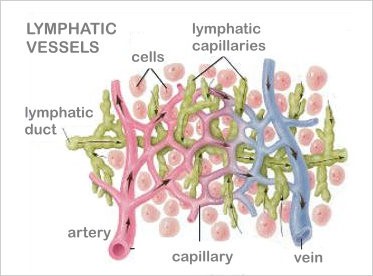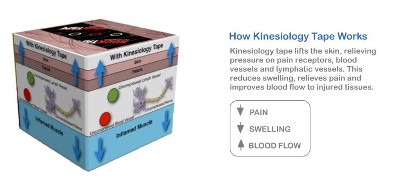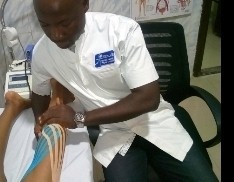How Does Kinesiotape Help with Lymphatic Drainage?

What is the Lymphatic System?
Similar to the circulatory system of blood vessels that carry blood, the lymphatic system consists of lymph vessels that carry lymphatic fluid. The two systems are intertwined throughout the body, with the circulatory system delivering oxygen and nutrients to the tissues and the lymphatic system removing substances, including excess fluids, cellular debris and infectious organisms. Another difference between the two systems is that while the heart pumps blood through the circulatory system, the lymphatic system doesn’t have a pump. Instead, it relies on other mechanisms such as osmotic pressure and muscle action to move fluids through its vessels. The lymphatic system is the main mechanism for reducing swelling and edema in the body.
How Does Kinesiology Tape Help with Lymphatic Drainage?
When kinesiology tape is applied to an inflamed or swollen area, the lifting motion of the tape creates a space between the top layer of skin and the underlying tissues. This space creates a pressure gradient between this area and the surrounding tissues that allows fluids to move into the lymphatic vessels and be eliminated from the body. In addition, enhanced muscle activation increases the muscle pump pushing more fluid through the lymphatic vessels. The result? Swelling goes down, pain is relieved, and the healing process is accelerated.


Kinesiology Tape “Fan Strips” for Lymphatic Drainage
To reduce swelling and edema, you need a specialized type of kinesiology tape called fan strips or edema strips. These strips have a short solid end with the rest of the tape separated into thin strips. They are called fan strips because they are applied in a fan-like pattern over the area of swelling or bruising. This lifts the skin over the lymphatic channels in the area, assisting them in removing excess fluids. These precut strips can safely and gently relieve swelling from surgery, medical conditions or injuries, including swollen feet and ankles, sprains, lymphedema, and ankle edema related to pregnancy or congestive heart failure.

